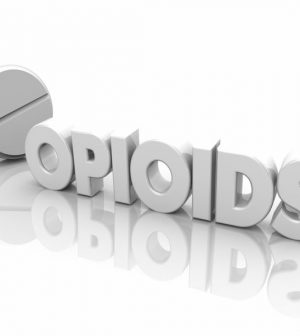- Understanding the Connection Between Anxiety and Depression
- How Daily Prunes Can Influence Cholesterol and Inflammation
- When to Take B12 for Better Absorption and Energy
- Epsom Salts: Health Benefits and Uses
- See What Saffron Can Do for Sleep and Heart Health
- 6 Common Mistakes to Avoid Before Your Physical
- Can Sweating Really Help You Beat a Cold?
- Strengthening Your Relationship: Practical Strategies
- Skip Storing This Everyday Product in the Fridge Door
- Green Tea + B3 Pairing May Boost Brain Health
J&J Finalizes $26 Billion Opioid Settlement

Settlements totaling $26 billion have been finalized between drugmaker Johnson & Johnson plus three major pharmaceutical distributors and state and local governments, over the companies’ role in America’s opioid crisis.
The settlement plan — involving Johnson & Johnson, AmerisourceBergen, Cardinal Health and McKesson — was first announced last year and is the largest to date among numerous opioid-related lawsuits in the United States. However, finalization only came last Friday after a large enough number of state and local governments was confirmed, the Associated Press reported.
Johnson & Johnson has nine years to pay its $5 billion share, while the distributors agreed to pay their combined $21 billion over 18 years, the AP reported. To reach the maximum amounts, states have to get local governments to sign on.
Even so, the settlement money can only do so much to stem the tide of opioid overdoses.
“We’re never going to have enough money to immediately cure this problem,” Joe Rice, one of the lead lawyers who represented local governments in the litigation that led to the settlement, told the AP. “What we’re trying to do is give a lot of small communities a chance to try to change some of their problems.”
The money could start flowing by April to nearly every state and local government nationwide, but none will go directly to victims of opioid addiction or their survivors.
Instead, the money will be used in efforts to reverse the damage of the opioid crisis.
For example, Camden County officials are thinking about using settlement money for a public education campaign to warn about the dangers of fentanyl, to put more drug counselors in the streets and more social workers in municipal courts, and to pay for anti-addiction medications in the county jail, spokesman Dan Keashen told the AP.
The four companies are not admitting wrongdoing and continue to deny that they helped cause the opioid crisis. Johnson & Johnson has stopped selling opioids and agreed not to resume, and the three distribution companies agreed to provide data to a clearinghouse meant to help detect when prescription drugs are diverted to the black market.
As opioid overdoses continuing to surge, largely because of the spread of fentanyl and other illegal synthetic opioids, public health experts are urging governments to fund opioid addiction programs that are proven to work, collect data on their efforts and launch prevention efforts aimed at young people, all while focusing on racial equity.
“It shouldn’t be: ready, set spend,” Joshua Sharfstein, a former secretary of the Maryland Department of Health who is now a vice dean of public health at Johns Hopkins University, told the AP. “It should be: think, strategize, spend.”
More information
Visit the National Institute on Drug Abuse for more on opioids.
Source: HealthDay
Copyright © 2026 HealthDay. All rights reserved.










